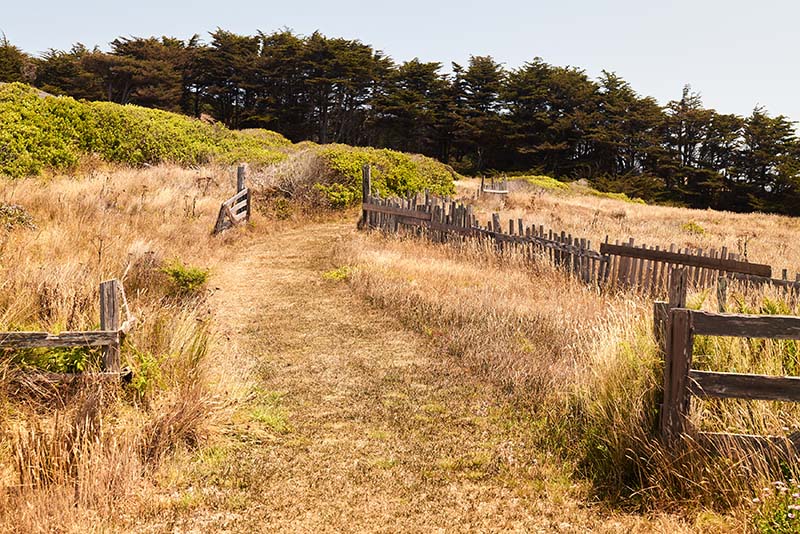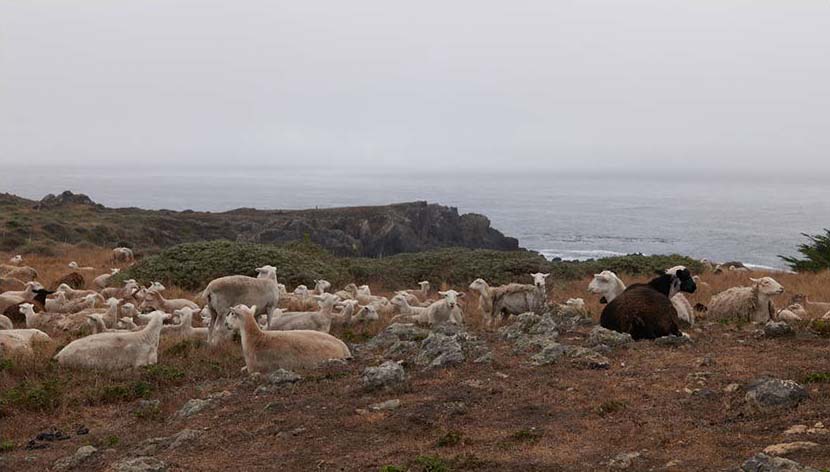The Story
History
The Sea Ranch was designed to respond to – and live in harmony with – the natural elements. The history of The Sea Ranch dates back to long before the project’s inception, where this stretch of coastline was long, wild and untouched due to its challenging elements, only seasonally visited by the native Pomo people who gathered shellfish and kelp from the shoreline. In the late 1800s, early settlers stayed for the timber harvest and eventually developed a sheep ranch.
In 1964, when Oceanic Properties, Inc. decided to build a new town, Al Boeke, architect and Vice President for Community Planning, was sent to California from his Hawaiian headquarters to find the right site. Boeke fell in love with the barren and grand Rancho Del Mar owned by Ed Ohlson and his family. He recommended Oceanic purchase the entire ranch property.
To give tangible, visible form to the principle of harmony between inhabitants and nature, Boeke assembled a stellar group of architects and design professionals. Lawrence Halprin, landscape architect, studied the topography, weather and vegetation that inspired the original master plan. His vision was based largely on the historical and ecological community.
The iconic Sea Ranch Lodge is one of the oldest buildings at The Sea Ranch. It was designed to serve a central role as a cultural hub for the community, housing a post office, land sales office, and information center for new visitors. After serving its initial purpose, it was expanded into a hotel, and, through the changing of hands over the years, it eventually lost its original soul.
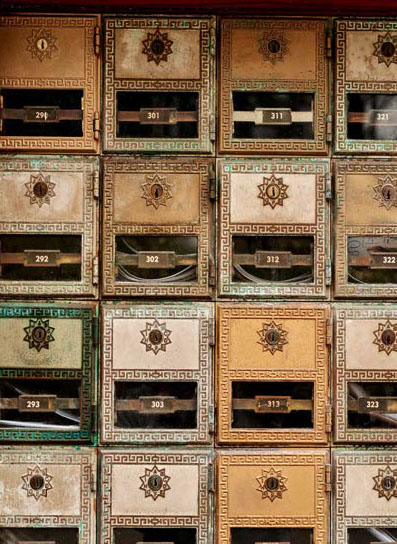
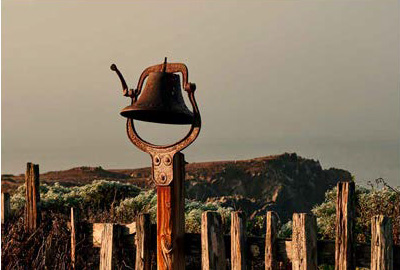
Early Settlers
The first recorded visitors to this land now known as The Sea Ranch were the Pomo Indians, who were hunters and fishermen. They made seasonal trips to the coast to gather kelp and shellfish. Settlement proceeded slowly. Access by land and sea was difficult, and navigation was hazardous. In 1846, Ernest Rufus, a naturalized Mexican citizen, received a land grant of five Spanish leagues, stretching south from the Gualala River to Ocean Cove. Called the "Rancho de Hermann" and later simply German Rancho, it was one of the last Mexican land grants because California broke away from Mexico three months later.
The previous year, Rufus had invited another German, Frederick Hugel, to the land he had selected. Hugel built a cabin on the hill above the present Equestrian Facility, fenced in grassland, and built a warehouse near the bluff from which he planned to ship and receive cargo. He raised cattle and horses, and planted fruit trees, potatoes, green peas, and other vegetables. German immigrants William Benitz and Charles Meyer Farming continued farming after Hugel. In 1855, William Bihler and Charles Wagner bought the northern 2 1/2 leagues of the rancho and imported livestock to improve the local stock. By 1857, Bihler had bought out his partner.
Adam Knipp and Bihler’s nephew, Christian Stengel, who had sailed to California in 1858, managed Bihler’s livestock operation. Beginning in the 1860s, they gradually bought the 3,220-acre ranch from Bihler. Between 1872 and 1882, Robert Rutherford bought a 985-acre section south of the Gualala River from Bihler and 13 years later lost it to bank foreclosure.
The Knipp-Stengel operation flourished. In the early 1880s, the partners built the landmark Sea Ranch barn that is now in the National Register of Historical Buildings. In 1903, Knipp and Stengel began selling off their land to Bender Brothers Mill and Lumber Co., which also acquired the Rutherford ranch.
The Bender Brothers built the Del Mar Mill on Del Mar Point (which burned in 1910), and a store, saloon, warehouse, and the Del Mar School along the existing county road. The school still stands at the southwest corner of Leeward and Deer Trail.
Starting in 1910, Walter P. Frick bought fragments of the ranch and unified them as the Del Mar Ranch. Ranching continued under Frick’s ownership; however, he never lived at the ranch full time but maintained a summer cottage on the site of the present Del Mar Community Center. He leased the ranch to a group of Russian immigrants. It was Frick who had the hedgerows planted as windbreaks, beginning in 1916, and who replaced the cattle with sheep.
Frick died in 1937, and the ranch and sheep were auctioned off in 1941 for back taxes. Margaret Ohlson and her four sons purchased both for $125,000, and the Ohlson family held it for 23 years. The Ed Ohlson house (which is part of the Del Mar Community Center) and the former home of brother Elmer Ohlson (which is near the Knipp-Stengel barn) were built during the 1950s.
Architecture
For prototype buildings at The Sea Ranch, Oceanic hired the architectural firm of Moore, Lyndon, Turnbull and Whitaker to design Condominium One along the bluffs and architect Joseph Esherick to design a cluster of houses nestled in a hedgerow. In 1964, the original designers evolved a concept of dynamic conservation of ‘living lightly on the land’ which starts with respect for nature. Each landscape element should be recognized and nurtured, reinforcing natural forms and scale. The specific site provides the identity, establishing a ‘territorial partnership’ with any structure placed within it, not upon it. Building materials should be drawn from nature: rough and simple.
A covenant would enforce stewardship of natural resources through an owners’ association of residents who felt an instinctive relationship with the environment. The challenge was demonstrating that people can inhabit a beautiful and fragile land located along a wild stretch of California coast without destroying it. Adherence to their original architectural and design concepts resulted in the evolution of an ‘intentional community,’ one that is unique to the California coast, if not the world. It is the willingness of The Sea Ranch community, past and present, to engage informed planning for its future, and to instill in its membership an enduring commitment to environmental stewardship and community service.
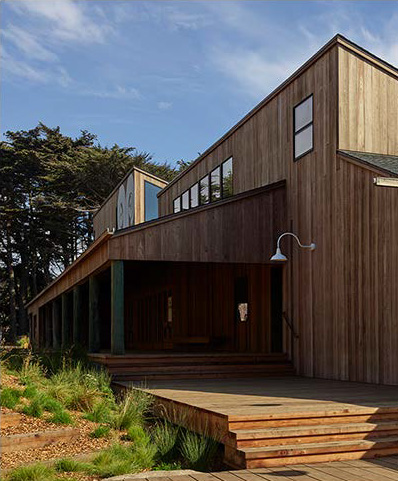
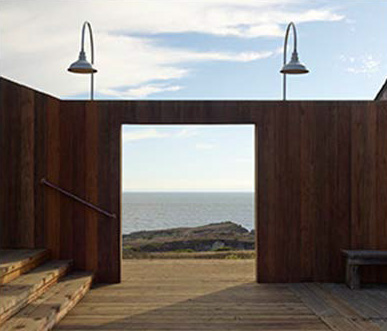
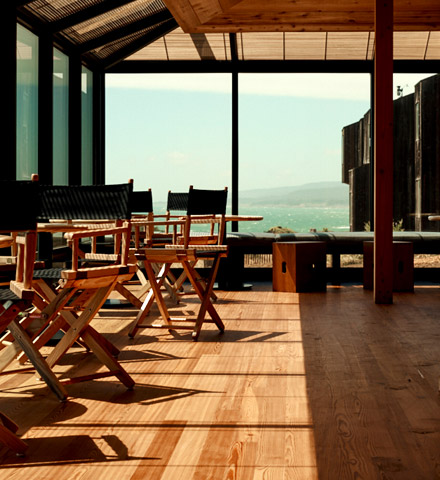
The Farm
The Mission
Our goal is to limit our environmental impact and create the most sustainable closed loop program locally possible. The Farm, located just south of The Lodge, allows us to provide agriculture and food products to The Lodge culinary team. We use regenerative ranching and farming practices by taking food waste products from The Lodge food service and recycling them into nutrient dense eggs, veggies, and cultivated mushrooms in dishes and products that our guests can enjoy.
Beef
We have a small but growing herd of cattle, who maintain our pastures and soil, while eating grass in the outdoors 365 days of the year. We don’t use chemicals or medications of any sort, and rely on a closed herd that is breeding good genetics suited to our particular location and climate.
Eggs
Our flock of laying hens and roosters continues to grow. They enjoy food scraps from The Lodge Restaurant on a daily basis (but no chicken scraps!). They get to run around outside each day, and return on their own to their coop each night for safety from predators. We currently supply enough egg production to cover half of what the Lodge uses per day and are working towards 100%.
Veggies
We started out with veggies and installed a few experimental beds to see what vegetables do best in our windy and foggy location. We’ve realized that the spring winds are pretty punishing for tender greens, so we have installed a low-tech caterpillar tunnel so we can grow them with some protection. And we’ve identified a number of plants that do just fine in the wind, so we’ve added beds and have increased our outdoor production as well.
Mushrooms
We are cultivating oyster mushrooms on old hay and straw mixed with the used coffee grounds from The Lodge Café. It was a learning process and we are now providing 25 lbs. of mushrooms per week to The Lodge for culinary use.
Pigs
In 2024 we introduced pigs as a new livestock program. We started with a dozen feeder pigs, and grow them out to market weight. We plan to rotate our hogs through paddocks to take advantage of their natural inclination to clear brush and fertilize soil, while reducing the negative impact they could have on the ground if left in one place for too long.
Bees
This Spring, we installed 2 hives of Italian honey bees at The Farm, not knowing how they would perform in this frequently windy or foggy environment. The bees ended up thriving in the extended sunny blooming season this year, and produced more honey than we had even hoped for! We filled 12 quart jars! We turned to local pro beekeeper John Bower for the harvest, and spent a fun afternoon with him, uncapping the comb, spinning out the honey with his extractor, and then straining and decanting it into our jars. The honey came out sweet and light in color, and with a hint of flavor from the large area of crimson clover we had planted just for the bees. We are excited to expand our hive count next year!
Composting
Whatever the chickens don’t eat goes in our compost pile. To that we add all the extra coffee grounds, plus wood chips from local tree companies, and any other carbon rich materials we can get our hands on. We’ve had to buy a couple of loads of compost to get started, but are excited to be making our own now, and looking forward to putting it on our garden beds for a fertility boost.
Lodge Programming
We offer a variety of Farm programming including Farm Tours, Hikes, Workshops and more. Find out about our Farm experiences via https://www.thesearanchlodge.com/programming/.
Giving Back
The Sea Ranch Lodge, in partnership with Kind Traveler’s Every Stay Gives Back program, supports Farm to Pantry. The mission of Farm to Pantry is nourishing the local Sonoma County Community and healing the planet through the prevention of food waste. Through our community impact program, $1 per night will fund Farm to Pantry, with 100% of the funds going directly to support Farm to Pantry. Learn more about your travel dollars are positively impacting the local community: https://www.kindtraveler.com/content/sea-ranch-lodge-every-stay-gives-back


